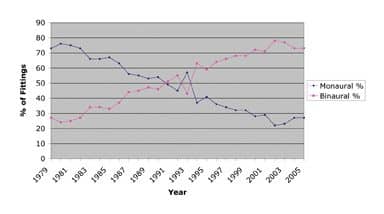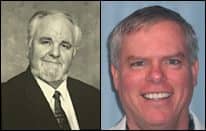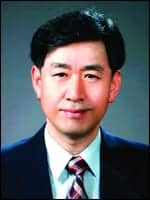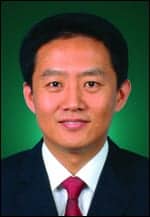Dispensers and audiologists have a wide range of choices available to them when it comes to the hearing aid batteries they can recommend to clients. As battery manufacturers approach the ceiling of zinc-air battery capacity, Hearing Products Report invited five battery manufacturers to discuss current and future trends in hearing aid batteries.
Participating in the discussion were: Tom Begley, division vice president for Rayovac Corp, a division of Spectrum Brands Inc, Madison, Wis; Phil Cooper, quality assurance manager for Energizer Holdings Inc, St Louis; Jayson Jeon, CEO of iCellTech Corp, Seoul, Korea; Henry Kessler, president of Sy Kessler Sales Inc, Dallas, the North American headquarters for Renata batteries; and Frank Wang, general manager of ZeniPower, Zhuhai, China, known as Zhuhai Zhi Li Battery Co Ltd in that country.

|
| Tom Begley – Rayovac Corp |

|
| Phil Cooper – Energizer Holdings Inc |

|
| Jayson Jeon – iCellTech Corp |

|
| Henry Kessler – Sy Kessler Sales Inc |

|
| Frank Wang – ZeniPower |
Hearing Products Report: How have batteries for hearing aids developed over the years from the early chemistries to today’s zinc airs, and what drives battery development today?
Cooper: [Hearing aid battery development] started in carbon zinc because that is what battery technology was, and [because that was] the form the hearing aid was at the time. What drove change was the miniaturization of the hearing aids. Batteries then moved to a mercuric oxide chemistry [in the] 1950s. Zinc-air chemistry evolved due to environmental pressures in the 1970s. The first size was the 675; smaller sizes evolved as hearing aid technology evolved.
Kessler: Over the last few years, three major forces have pushed the battery industry toward innovation. One would, of course, be the desire for long-running performance. This is generally controlled by the overall size of the battery—the volume; the battery’s ability to allow the needed amount of voltage to be readily available—the impedance and chemistry; and the structure that best optimizes and delivers these factors—the construction technology. The second [force] would be environmental concerns. While today’s zinc-air batteries still contain traces of mercury, it is but a tiny fraction of the mercury used in the old, obsolete mercuric oxide cells that were banned over 10 years ago. The industry remains under pressure to eliminate those last few milligrams of mercury, and thus far, this has proven very expensive and difficult to do while maintaining the high-quality performance people have grown to expect. The third [factor] would be today’s high-tech hearing devices and their growing array of features, each of which can require a heavy dose of power. Today’s smart hearing devices can drive batteries toward their fullest performance capability.
HPR: What are the latest trends in designing new hearing aid batteries?
Jeon: I’d say the latest trends are for having longer running time for ordinary hearing aids, maintaining high capacity under high current drain, and improving storage time.
Begley: Patients are demanding value for their money, and what they want is a battery that delivers the longest life consistently. A fresher battery is a better battery, and the battery company that can deliver a fresher battery will improve patient satisfaction.
Kessler: While always striving to push today’s current technology to it fullest capability, frankly, there is a growing focus on developing brand-new technology, especially in the field of rechargeable solutions.
Wang: To me, it’s all about longer life and higher power output. Today, the highly developed digital hearing aids are more power hungry. Customers need smaller batteries with higher power and longer life. The other trend of using rechargeable batteries could also have some impact on the market, but I don’t think it will be too large.
Cooper: Consumer interaction and OEM [original equipment manufacturer] specifications drive the form and function of hearing aid batteries and their packaging systems. Environmental issues continue to factor into hearing aid battery design.
HPR: Do you think zinc air is going to be the hearing aid gold standard for the foreseeable future, or can we expect new chemicals or alloys that will improve capacity with longer life?
Begley: Zinc air offers the best energy density of any battery. That means it provides more battery life and power in the smallest space. No other chemistry system does as well.
Cooper: We do not foresee the need to deviate chemistry formats in the future, although interest in rechargeable batteries continues to be discussed in the industry.
Wang: I doubt that any other technology could replace zinc air for hearing aids in the next 10 years, but I do believe that rechargeables will have an increasing, though small, market share also.
HPR: How are manufacturers making improvements in packaging to help end users handle batteries?
Begley: Rayovac invented the dial card in the 1970s, and it’s the most popular and cost effective way to package a zinc-air battery. Many companies, including Rayovac, have made the tabs longer so that the batteries are easier to handle.
Wang: It’s quite difficult to develop new packaging for better handling. Longer tabs can be used, and magnetic mechanisms can also help. ZeniPower is now in the process of developing a new package design that will address the needs of our customers.
Kessler: The “sizes” of the batteries are standardized, and typically, the largest battery possible that will easily fit into the aid—and ear—is the size chosen. With regard to the tab, Renata was the world’s first company to consider this issue when we developed our first zinc-air package. Eventually, we realized that our exaggerated “large tab” was far larger than necessary. With a marginally increased tab size, Renata was able to improve handling significantly. Our customers felt that anything more complicated and less intuitive would require an unnecessary investment in training time.
Cooper: Our Energizer EZChange battery applicator was launched 6 years ago to eliminate the need for a user to handle a battery at all. In addition, this year, Energizer launched wider, longer-tabbed batteries in individually sealed packages to make the battery easier to handle and more convenient to take with you.
Jeon: We’ve researched ways to improve our packaging, but the project is on hold right now, as it will affect production costs. We’re concerned that higher prices would offset the user’s convenience. However, we will certainly be continuing to study ways to improve our packaging with a minimal cost increase to the end user.
HPR: Will there ever be a ceiling to battery capacity given the size of button batteries, or is battery capacity similar to microchip development in that it will increase a little bit every year?
Wang: Personally, I think there is a ceiling, and we may be approaching it soon. By reducing the thickness of battery parts, the capacity will only increase maybe 10% to 15%. Batteries aren’t like the microchip industry because batteries are controlled by Faraday’s law of electrolysis, which states that the maximum capacity is determined by the mass of zinc or by the volume of the battery.
Kessler: Because battery sizes are fixed, there is a limit to the volume of active material that can be added. However, the operational life of the battery can be improved by increasing the energy generated by the battery—energy density—and by reducing the power consumption required by the hearing aids. As hearing aids evolve, they will become more efficient by design.
Jeon: There is always a possibility of further capacity improvement. However, I think that the capacity stated on the current advertisements of manufacturers has theoretically hit a ceiling. The key task now is finding how the stated capacities can be maintained for long-term storage and for devices that use a lot of power.
Begley: There is a limit to how much life a zinc-air battery can provide in the current envelope we use. However, just as important, and often overlooked, is consistency. We believe it’s important to deliver a battery that is consistent from battery to battery.
HPR: Rechargeable button batteries are currently a small segment of the market. Do you see the market growing over time, or are there limitations that make rechargeable button cells impractical compared to disposables?
Kessler: Rechargeable cells may very well become the future. Let’s face it: Today, people are programmed to plug all of their high-tech devices in before going to sleep. As I predicted several years ago in the pages of this magazine, hearing aids and cellular phones will continue to evolve together. Perhaps the term “aids” will simply go away, since it implies some type of handicap.
Wang: I think rechargeable button cells could grow over time, but I don’t think this will be a huge market. They don’t last very long compared to zinc-air disposables. Also, compared to our zinc-air button cells, rechargeable cells are more costly, even if they can be used again hundreds of times.
HPR: What are the new developments/trends in hearing aid batteries that will be coming in the next 5 years?
Jeon: As we said earlier, battery capacities may have already hit a ceiling. Accordingly, maintaining initial capacities for longer life and producing equivalent capacities under high-power instruments will probably be the areas for further development. I think zinc-air batteries will develop more or less the same way as alkaline batteries. That is, the development of zinc-air batteries is fairly mature today, and there is not much of a difference in quality [among] manufacturers. So, maintaining that stability could be key. I doubt that mercury-free batteries will be an alternative, as they have certain limitations in terms of performance and longevity. Consequently, manufacturers have been discouraged in developing them further. However, the mercury content of today’s zinc-air button cell is less than 1% of the total battery weight. So, I think disposable batteries will continue to be the industry standard, and I don’t think rechargeable batteries will be an alternative either, due to the limitation of [their] capacity.
Cooper: Capacity will continue to be an important factor, but as hearing aids become more advanced, other characteristics will start to play a role in performance. Consumer-driven needs combined with the cost of these more sophisticated devices will [cause] consumers to demand incremental quality characteristics. These include improved rust resistance, reduced leakage, and minimal battery expansion—bulge—all of which can damage the workings of a hearing aid. Consumers want the experience of changing the battery to be easier, and battery delivery systems, whether applicators or packaging, will continue to develop to satisfy this demand.
Wang: As we’ve discussed, higher capacity with longer life is quickly approaching its ceiling. However, higher power capability is still possible. The technology has a way to go before we reach that ceiling. I think rechargeable button cells may expand their market, too, but zinc air will still dominate the market.
Tor Valenza is a staff writer for Hearing Products Report. He can be reached at [email protected].




